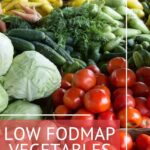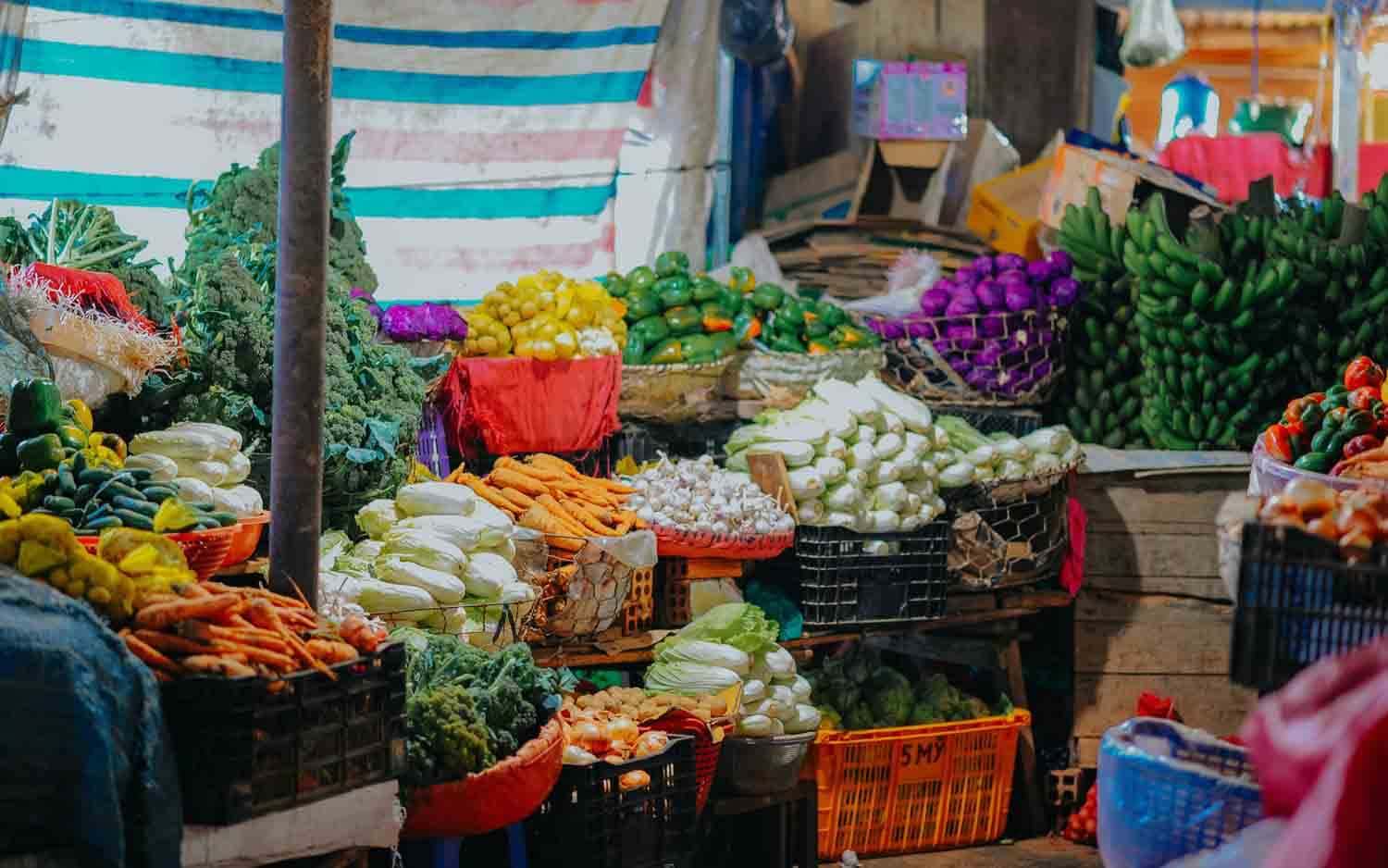
Low FODMAP vegetables
Vegetables are healthy and they are also good for your gut. So when you are starting the low FODMAP diet it is good to know what low FODMAP vegetables you can pick.
In this blog, I have created an overview of low FODMAP vegetables and in which amounts you can eat them. And I give tips for eating enough veggies when following this diet.
Good to know
Low FODMAP amounts for foods change regularly. I try to update this list regularly, but can’t be 100% sure that everything is correct at all times.
To make sure that you are always using the right low FODMAP amounts, I strongly advise downloading the Monash University FODMAP app.
In this app, you can always find the latest information on which foods are low in FODMAPs and in which amounts you can eat them.
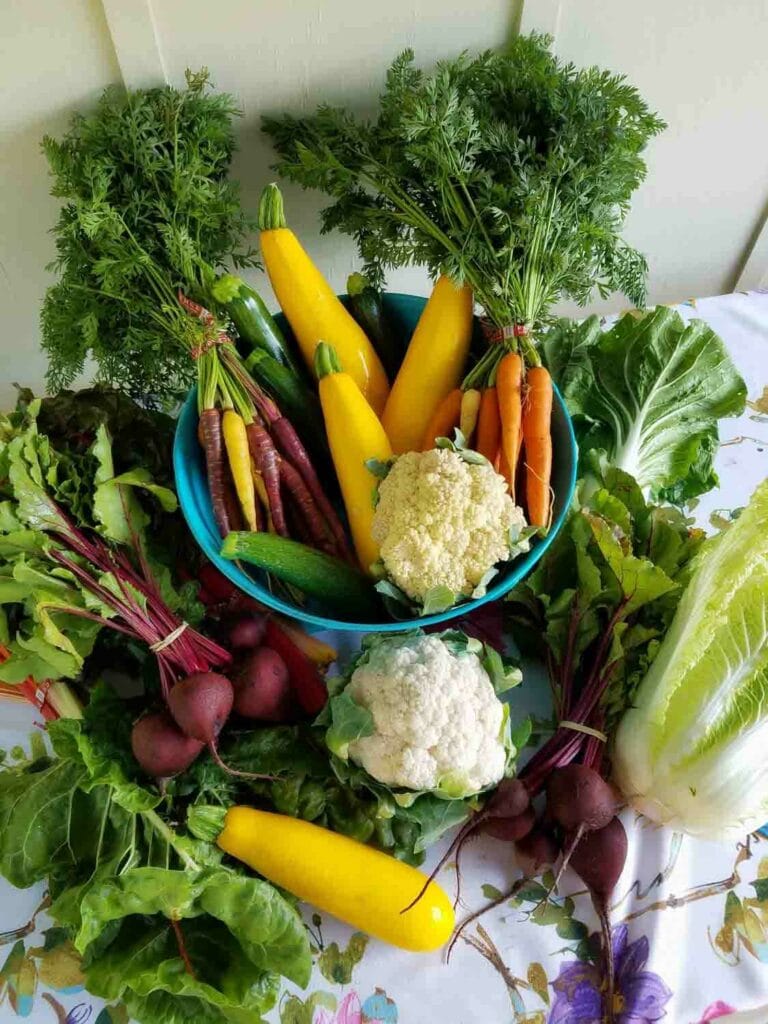
What vegetables can you eat on the low FODMAP diet?
It is important to know that foods can be low in FODMAPs in a certain serving, but your serving becomes higher in FODMAPs when you consume a larger amount.
For example, 50 grams of zucchini is a safe serving. But when you consume 75 grams, your serving is high in fructans and can cause symptoms.
For that reason, it is important to always check the low FODMAP serving size for vegetables. If you find a FODMAP food list on the internet that only lists low FODMAP vegetables without mentioning a serving size, don’t use it.
The information is then incomplete and consuming too much of a certain FODMAP group can cause symptoms.
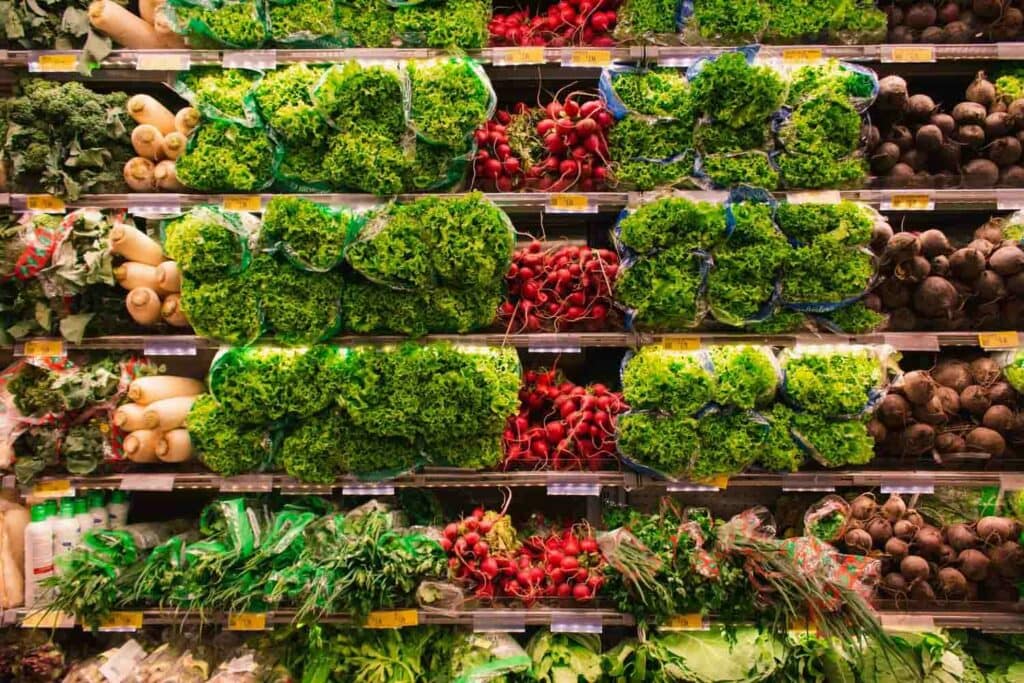
Below, I have created two lists, one with veggies that you can eat in relatively large servings. And one with veggies that you have to be a bit more careful with, but can still be enjoyed in a small serving.
Note: the Monash University app gives a safe serving size of a product and then usually shows an amount in which the food contains a moderate amount of FODMAPs.
For example, a safe serving size of eggplant is 75 grams. Eggplant contains a moderate amount of sorbitol at a serving of 182 grams per serving.
You can eat some more than 75 grams in this case, as you as you stay well below 182 grams.
I usually make sure that I stay 30-40 grams below the high FODMAP serving size. I also took this into account for the serving sizes mentioned below.
Vegetables that can be eaten in large amounts
Below you can find an overview of low FODMAP vegetables that you can eat in large amounts. These vegetables can easily be used to make up your main serving of veggies in a meal:
- Alfalfa: up to 140 grams
- Arugula/rocket lettuce: no upper limit
- Aubergine/eggplant: up to 150 grams
- Bamboo shoots: no upper limit
- Bell pepper, green: up to 200 grams
- Broccoli: heads only: up to 200 grams
- Carrots: up to 500 grams
- Celeriac: up to 300 grams
- Collard greens: no upper limit
- Corn kernels, canned: up to 200 grams
- Cucumber: no upper limit
- Daikon: up to 230 grams
- Edamame beans: up to 170 grams
- Endive leaves: no upper limit
- Kale: no upper limit
- Leek: leaves only: up to 100 grams
- Lettuce, for example, iceberg or red coral: no upper limit
- Mushrooms, canned: up to 150 grams
- Mushrooms, oyster: up to 950 grams
- Olives, black and green: no upper limit
- Spring onion, tops only: up to 220 grams
- Parsnip: no upper limit
- Potatoes: up to 450 grams
- Pumpkin: kabocha: no upper limit
- Radish: no upper limit
- Seaweed (nori): no upper limit
- Spaghetti squash: up to 400 grams
- Spinach: no upper limit
- Witlof: no upper limit
Vegetables that can be eaten in smaller amounts
Below you can find an overview of vegetables that have a low FODMAP amount, but that can’t be eaten in large servings.
You can use these vegetables combined with other vegetables in a meal to reach your daily amount of veggies:
- Artichoke hearts, canned: up to 50 grams
- Green beans: up to 80 grams
- Beetroot, canned: up to 80 grams
- Bell pepper, red: up to 43 grams
- Bell pepper, orange: up to 38 grams
- Bell pepper, yellow: up to 35 grams
- Bok choy: up to 75 grams
- Brussels sprouts: up to 50 grams
- Butternut squash: up to 45 grams
- Cabbage, common: up to 75 grams
- Cabbage, red: up to 75 grams
- Cassava: up to 75 grams
- Courgette/zucchini: up to 65 grams
- Fennel bulb, up to 48 grams
- Okra: up to 75 grams
- Peas, canned: up to 45 grams
- Pumpkin, canned: up to 75 grams
- Pumpkin, sugar: up to 45 grams
- Rutabaga: up to 75 grams
- Sweet potatoes: up to 75 grams
- Squash, acorn: up to 54 grams
- Tomato, common: up to 65 grams
- Tomato, cherry: up to 45 grams
- Tomato, roma: up to 48 grams
- Tomatoes, canned: up to 100 grams
As you can see, there are still plenty of veggies that you can enjoy!
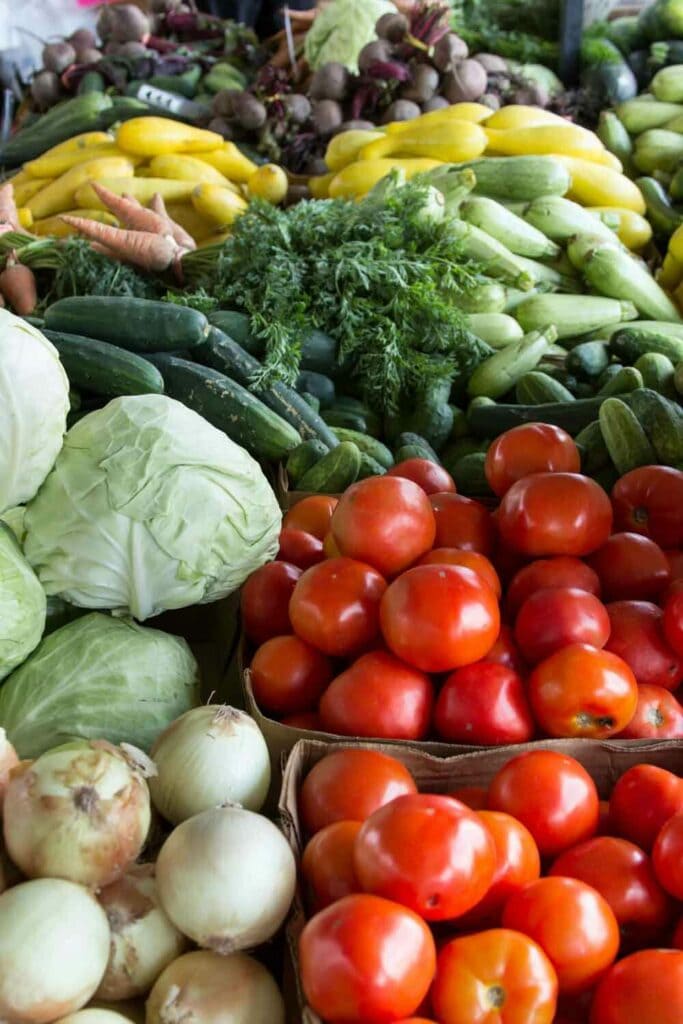
Vegetables that should be avoided
Unfortunately, some vegetables can better be avoided when you are still in the elimination phase of the low FODMAP diet.
These are vegetables that don’t have a low FODMAP serving or a serving so small that you cannot really use it in a meal:
- Artichoke, fresh
- Asparagus
- Beetroot, fresh
- Cauliflower
- Celery
- Garlic
- Leek, bulb
- Mushrooms (button, portobello, shiitake, chanterelle)
- Onion (red, white, shallot)
- Peas (snow or sugar snap)
- Sauerkraut (fermented white cabbage)
In the reintroduction phase of the diet, you are going to reintroduce each FODMAP group one by one. After that you can hopefully add some of these vegetables back into your diet.
Combining different veggies
When you are combining different vegetables, it is important that you are careful with using vegetables that contain the same FODMAP group in one meal.
For example, tomatoes are low FODMAP in a serving of 50 grams. And contain a moderate amount of fructose in a serving of 65 grams.
Red bell pepper is low FODMAP in a serving of 30 grams. And contains a moderate amount of fructose in a serving of 45 grams.
If you eat 50 grams of tomato or 30 grams of bell pepper, you are safe. But if you combine them in one meal, you go over the threshold for fructose and that can cause symptoms.
You can read a detailed explanation of this in my blog about FODMAP stacking.
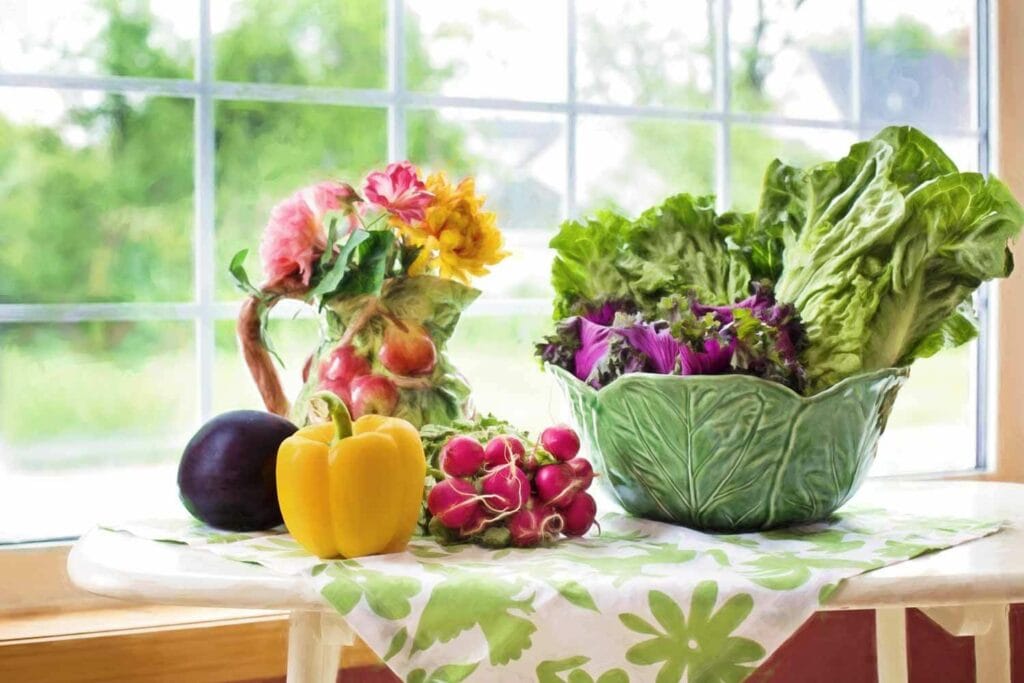
How do you eat enough vegetables on the low FODMAP diet?
My two most important tips for eating enough vegetables on the low FODMAP diet are:
- Spread your vegetable intake over the day. For example: add some veggies to your lunch and dinner. And eat some vegetables as a snack.
Check out my blog about low FODMAP snacks for some inspiration. - Combine different vegetables in one meal. And pick veggies that contain different FODMAP groups.
You can read more tips on eating enough vegetables in this blog.
Vegetable recipes
Need some inspiration to start eating your low FODMAP veggies? Check out these recipes:
- Oven-roasted low FODMAP vegetables
- Oven-roasted carrots, parsnip & sweet potato
- Low FODMAP carrot salad
- Grilled eggplant with tomatoes and feta
- Low FODMAP muhammara (grilled bell pepper spread)
- Low FODMAP Asian-style salad
- Coleslaw with mayonnaise dressing
Soups are also a great way to consume some extra vegetables. Check out all low FODMAP soup recipes for some ideas.
Will you let me know if you have made this recipe? I would love it if you would let me know what you think about the recipe by leaving a comment and rating below. You can also share your creations with me by tagging me on Instagram @karlijnskitchen or by using the hashtag #karlijnskitchen

